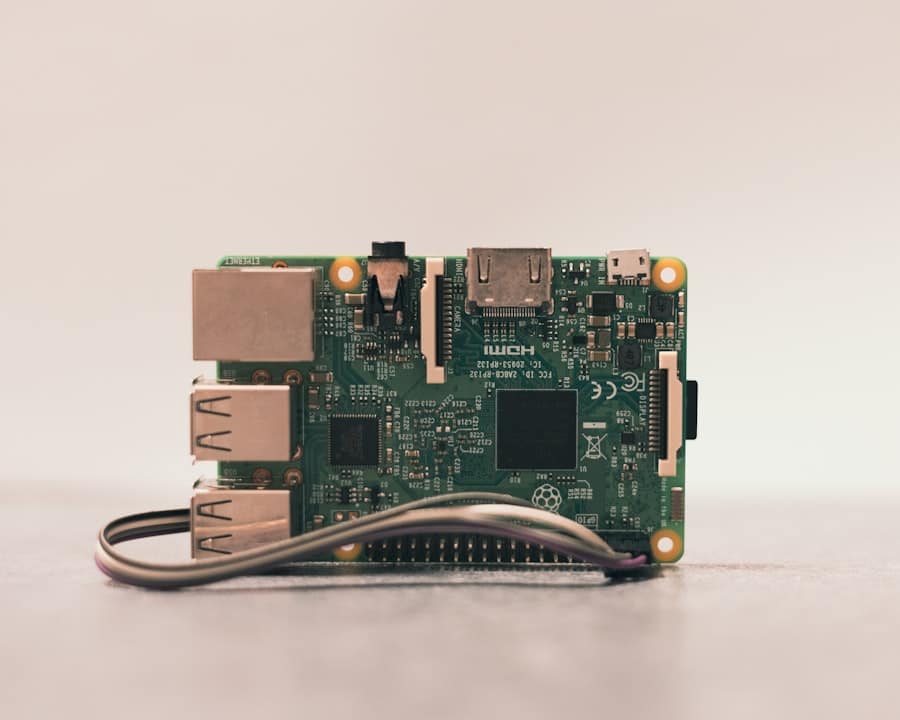The concept of Hardware-as-a-Service (HaaS) has evolved significantly over the past few decades, transitioning from traditional hardware ownership to a more flexible, subscription-based model. Initially, businesses relied heavily on purchasing physical hardware outright, which often required substantial capital investment and long-term commitments. This model posed challenges, particularly for small and medium-sized enterprises (SMEs) that struggled to keep pace with rapid technological advancements.
As technology evolved, so did the needs of businesses, leading to the emergence of HaaS as a viable alternative. The shift towards HaaS gained momentum with the rise of cloud computing and the increasing demand for scalable solutions. Companies began to recognize the advantages of accessing hardware resources without the burden of ownership.
This transition was further accelerated by the proliferation of Internet of Things (IoT) devices and the need for real-time data processing. As organizations sought to leverage these technologies, HaaS models provided a way to acquire the necessary hardware on a subscription basis, allowing for greater flexibility and adaptability in an ever-changing technological landscape.
Key Takeaways
- Hardware-as-a-Service models have evolved from traditional hardware purchasing to subscription-based models, offering more flexibility and cost-effectiveness for businesses.
- Subscription-based Hardware-as-a-Service provides benefits such as reduced upfront costs, scalability, and access to the latest technology, making it an attractive option for businesses.
- Traditional hardware purchasing is impacted by the rise of subscription-based models, as businesses shift towards more flexible and cost-effective options.
- The growth of subscription-based hardware providers is driven by the increasing demand for flexible and scalable hardware solutions in the market.
- Technology plays a crucial role in enabling Hardware-as-a-Service models, providing the infrastructure and tools necessary for seamless subscription-based services.
The Benefits of Subscription-Based Hardware-as-a-Service
One of the most significant benefits of subscription-based HaaS is cost predictability. Businesses can budget more effectively when they know their hardware expenses will be consistent each month. This model eliminates the need for large upfront capital expenditures, allowing companies to allocate resources more efficiently.
For instance, a startup can invest its limited funds into product development or marketing rather than tying up cash in expensive servers or networking equipment. Additionally, HaaS models often include maintenance and support services as part of the subscription fee. This means that businesses can rely on their service providers to handle repairs, upgrades, and replacements, reducing the burden on internal IT teams.
For example, a company using a HaaS model for its networking infrastructure can rest assured that any issues will be promptly addressed by the provider, allowing employees to focus on their core responsibilities rather than troubleshooting hardware problems. This not only enhances productivity but also ensures that businesses are always using the latest technology without incurring additional costs.
The Impact on Traditional Hardware Purchasing

The rise of HaaS has fundamentally altered the landscape of traditional hardware purchasing. As more organizations embrace subscription models, the demand for outright purchases has declined significantly. This shift has prompted manufacturers and vendors to rethink their sales strategies and product offerings.
Many companies are now focusing on providing flexible leasing options or subscription services rather than solely selling hardware. For instance, major players like Dell and HP have introduced HaaS offerings that allow customers to access their products through monthly subscriptions rather than one-time purchases. Moreover, this transformation has led to increased competition among hardware providers.
As businesses seek out HaaS solutions, vendors must differentiate themselves by offering superior service, innovative technology, and competitive pricing. This competitive environment has resulted in better deals for consumers and has driven technological advancements as companies strive to meet evolving customer needs. The traditional model of hardware purchasing is being replaced by a more dynamic approach that prioritizes flexibility and customer satisfaction.
The Growth of Subscription-Based Hardware Providers
The growth of subscription-based hardware providers has been remarkable in recent years, reflecting a broader trend towards as-a-service models across various industries. Startups and established companies alike have recognized the potential of HaaS and have entered the market with innovative solutions tailored to specific industries or use cases. For example, companies like Flexential and Rackspace have emerged as leaders in providing HaaS solutions for data centers and cloud infrastructure, catering to businesses looking for scalable and reliable hardware options.
This growth is not limited to large enterprises; small businesses are also increasingly adopting HaaS models to access advanced technology without the associated costs of ownership. Providers are now offering specialized packages that cater to different sectors, such as healthcare, education, and manufacturing. These tailored solutions enable organizations to leverage cutting-edge technology while minimizing financial risk.
The Role of Technology in Enabling Hardware-as-a-Service Models
Technology plays a crucial role in enabling HaaS models by facilitating seamless integration between hardware and software solutions. Cloud computing has been a game-changer in this regard, allowing businesses to access powerful computing resources remotely while relying on subscription-based hardware. This integration enables organizations to scale their operations quickly and efficiently without being constrained by physical limitations.
Furthermore, advancements in IoT technology have paved the way for more sophisticated HaaS offerings. By connecting devices and sensors to the cloud, businesses can monitor performance in real-time and make data-driven decisions about their hardware usage. For instance, a manufacturing company utilizing IoT-enabled machinery can track equipment performance and receive alerts when maintenance is required, ensuring optimal operation without incurring unexpected downtime.
This level of connectivity not only enhances operational efficiency but also provides valuable insights that can inform future hardware investments.
The Importance of Customer Support and Service in Subscription-Based Models

Building Ongoing Relationships
In subscription-based HaaS models, customer support and service are crucial to ensuring customer satisfaction and retention. Unlike traditional purchasing models where customers may have limited interaction with vendors post-sale, HaaS relies on ongoing relationships between providers and clients. This necessitates a strong focus on customer service, as businesses expect timely responses to inquiries and efficient resolution of issues.
Investing in Robust Support Systems
Providers must invest in robust support systems that can address customer needs effectively. This includes offering multiple channels for communication, such as phone support, live chat, and email assistance. Additionally, proactive support measures—such as regular check-ins and performance assessments—can help identify potential issues before they escalate into significant problems.
Proactive Support in Action
For example, a company using a HaaS model for its IT infrastructure may benefit from regular performance reviews conducted by its provider, ensuring that any necessary upgrades or adjustments are made promptly.
The Future of Subscription-Based Hardware-as-a-Service Models
Looking ahead, the future of subscription-based HaaS models appears promising as businesses continue to seek flexible solutions that align with their evolving needs. As technology advances at an unprecedented pace, organizations will increasingly prioritize agility and scalability in their operations. HaaS models offer a way to stay ahead of the curve by providing access to the latest hardware without the constraints of ownership.
Moreover, as sustainability becomes a more pressing concern for businesses worldwide, HaaS models can contribute to greener practices by promoting resource efficiency. By utilizing shared hardware resources rather than individual ownership, companies can reduce electronic waste and optimize energy consumption. This shift towards sustainability will likely drive further adoption of HaaS models as organizations seek to align their operations with environmentally responsible practices.
Considerations for Businesses Considering Subscription-Based Hardware-as-a-Service Models
For businesses contemplating the transition to subscription-based HaaS models, several key considerations must be taken into account. First and foremost is the assessment of specific needs and requirements. Organizations should evaluate their current hardware usage patterns and identify areas where HaaS could provide tangible benefits.
This includes considering factors such as scalability requirements, budget constraints, and desired levels of support. Additionally, businesses should conduct thorough research on potential providers to ensure they select a partner that aligns with their goals and values. Factors such as reputation, service offerings, pricing structures, and customer support capabilities should all be considered when making a decision.
Engaging in pilot programs or trials can also provide valuable insights into how well a particular HaaS solution meets organizational needs before committing to a long-term contract. In conclusion, as the landscape of technology continues to evolve rapidly, Hardware-as-a-Service models are poised to play an increasingly vital role in how businesses acquire and manage their hardware resources. By embracing these subscription-based solutions, organizations can enhance flexibility, reduce costs, and stay competitive in an ever-changing market environment.
In a related article, How to Choose Tablet for Students, Enicomp provides valuable insights into selecting the best tablet for educational purposes. This article complements the discussion on subscription-based hardware-as-a-service models by highlighting the importance of choosing the right technology tools for students to enhance their learning experience. By understanding the specific needs and requirements of students, individuals and institutions can make informed decisions when investing in technology solutions.
FAQs
What is a subscription-based hardware-as-a-service model?
A subscription-based hardware-as-a-service model is a business model where customers pay a recurring fee to use hardware products, such as equipment or devices, as a service rather than purchasing them outright. This model often includes ongoing maintenance, updates, and support.
How does a subscription-based hardware-as-a-service model work?
In a subscription-based hardware-as-a-service model, customers pay a regular fee to access and use hardware products. This fee typically includes the cost of the hardware, ongoing maintenance, updates, and support. The hardware remains the property of the service provider, and the customer benefits from the convenience of regular updates and support without the upfront cost of purchasing the hardware.
What are the benefits of a subscription-based hardware-as-a-service model?
Some benefits of a subscription-based hardware-as-a-service model include lower upfront costs for customers, regular updates and maintenance, access to the latest technology, and the ability to scale hardware usage as needed. Additionally, this model can provide predictable costs for businesses and reduce the burden of managing and maintaining hardware.
What types of hardware products are commonly offered through subscription-based hardware-as-a-service models?
Common hardware products offered through subscription-based hardware-as-a-service models include computers, servers, networking equipment, printers, and other office equipment. Additionally, IoT devices, industrial machinery, and other specialized hardware may also be offered through this model.
What industries are adopting subscription-based hardware-as-a-service models?
Industries such as IT, manufacturing, healthcare, retail, and logistics are increasingly adopting subscription-based hardware-as-a-service models. This model is also gaining traction in the consumer market for products like smart home devices and wearable technology.

